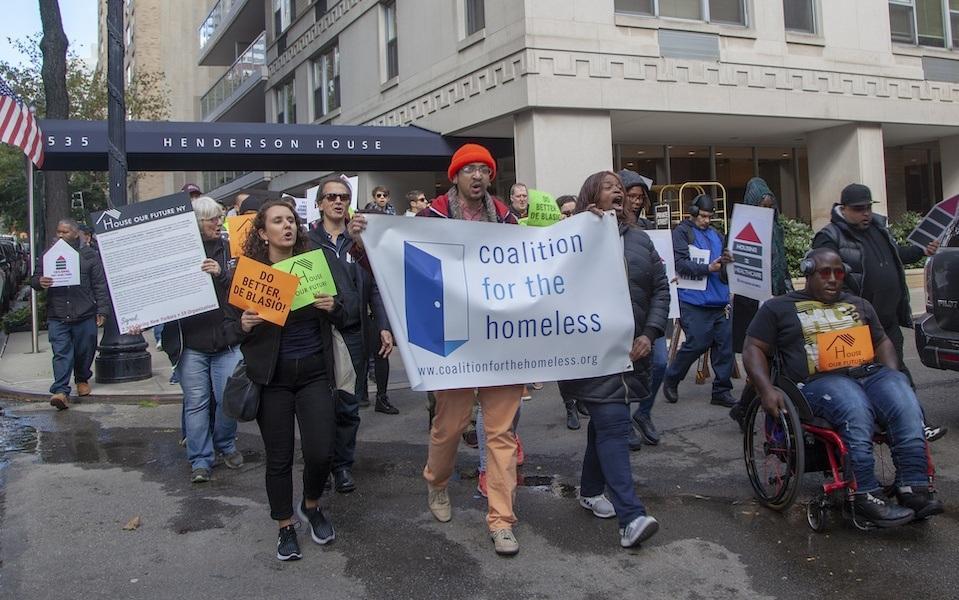NYC Homelessness Advocates Respond Strongly to Brian Kilmeade’s Controversial Statements
Advocacy organizations throughout New York City have vehemently criticized Fox News host Brian Kilmeade following his provocative comments about people experiencing homelessness. Kilmeade’s suggestion implying lethal action against unhoused individuals ignited widespread condemnation from homeless rights activists, municipal leaders, and community representatives. These groups denounced the remarks as “reckless” and “harmful,” emphasizing that such language deepens stigma and obstructs compassionate approaches to homelessness.
Although Kilmeade issued a public apology soon after the backlash, many advocates argue that his words have already contributed to a hostile environment that exacerbates the challenges faced by unhoused populations. Key concerns raised include:
- Heightened marginalization and fear among vulnerable groups
- Reduced public backing for evidence-based housing-first initiatives
- Potential encouragement of aggressive attitudes and actions toward the unhoused
| Statement | Organization |
|---|---|
| “Comments like these strip away the dignity of people in crisis.” | New York Coalition for the Homeless |
| “Public discourse carries weight and consequences.” | NYC City Council Member |
| “We must prioritize humane policies over inflammatory rhetoric.” | Social Justice Advocates Network |
The Role of Media Language in Shaping Public Views and Policies on Homelessness
Language used by media outlets profoundly shapes societal attitudes and policy debates concerning homelessness. Brian Kilmeade’s contentious remarks on a national platform not only provoked public outrage but also highlighted the risks of dehumanizing narratives. By portraying unhoused individuals in a violent and dismissive manner, such rhetoric can intensify stigma and fear, potentially steering policy toward punitive rather than supportive measures.
Experts and advocates stress the critical need for responsible journalism that fosters understanding and empathy. Media coverage often influences both public opinion and legislative priorities. Some of the detrimental effects of incendiary language include:
- Normalization of harsh, anti-homeless legislation
- Growing public endorsement of criminalization instead of aid
- Decline in compassion for people without stable housing
- Widening mistrust between marginalized communities and authorities
| Dimension | Effect of Rhetoric |
|---|---|
| Public Opinion | Amplified fear and negative stereotypes |
| Policy Development | Tendency toward punitive approaches |
| Media Ethics | Urgent call for balanced, compassionate reporting |
| Advocacy Mobilization | Heightened efforts to counteract harmful narratives |
Community Leaders Advocate for Media Accountability and Sensitivity Education
In the wake of Brian Kilmeade’s controversial statements, New York City’s community leaders and advocacy groups have united in demanding greater accountability from media figures. Despite Kilmeade’s apology, many assert that his comments reinforce damaging stereotypes and deepen the marginalization of those enduring homelessness. These voices stress that such rhetoric erodes the dignity of unhoused individuals and obstructs comprehensive solutions.
Advocates are urging concrete actions to promote responsible media coverage, including:
- Mandatory sensitivity and awareness training for journalists and broadcasters covering homelessness and related social issues.
- Creation of oversight bodies to monitor and address harmful public statements by influential media personalities.
- Partnerships between media organizations and homelessness experts to ensure accurate and respectful reporting.
| Initiative | Objective |
|---|---|
| Sensitivity Training | Equip media professionals with respectful, informed approaches |
| Accountability Panels | Publicly review and respond to harmful rhetoric |
| Expert Collaboration | Promote accurate and empathetic homelessness coverage |
Best Practices for Ethical Media Coverage of Homelessness
Media organizations wield significant influence in shaping public understanding of homelessness. To encourage responsible journalism, reporters and editors must approach this complex issue with sensitivity, depth, and a commitment to truth. Coverage should move beyond mere statistics or sensational headlines to illuminate the lived experiences of unhoused individuals, the systemic factors driving homelessness, and the innovative solutions being implemented nationwide.
Incorporating perspectives from social workers, housing advocates, and policymakers can enrich narratives and foster informed public dialogue. Establishing clear editorial standards can help avoid perpetuating stigma or misinformation. The following table outlines essential principles for newsrooms dedicated to ethical reporting on homelessness.
| Principle | Explanation |
|---|---|
| Person-First Language | Use terms like “people experiencing homelessness” to respect individual dignity. |
| Provide Context | Explain systemic causes such as housing shortages, mental health, and economic factors. |
| Avoid Sensationalism | Refrain from inflammatory or violent framing that dehumanizes vulnerable groups. |
| Highlight Solutions | Showcase effective local programs and policy initiatives to inspire positive change. |
| Responsible Sourcing | Verify facts carefully and include voices from the unhoused community and experts. |
Conclusion: Essential Insights on Media’s Role in Homelessness Discourse
The controversy ignited by Brian Kilmeade’s remarks has intensified discussions about how homeless individuals are portrayed and treated in media narratives. While his apology attempts to mitigate the fallout, many advocates emphasize that the incident reveals a troubling lack of empathy toward people experiencing homelessness. As public conversations evolve, there is a growing demand for heightened sensitivity and accountability from media figures when addressing issues impacting vulnerable populations in New York City and across the nation.













